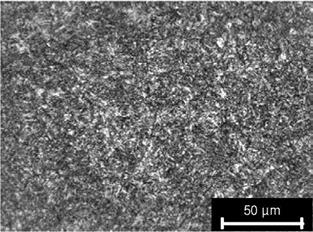Heat-treated steels are machine-building steels, which are suited to hardening due to their chemical composition and exhibit excellent toughness at a given tensile strength after heat treatment. Heat-treated steels have carbon contents between 0.2 and 0.6 % and have therefore higher strength than case-hardened steels. The main alloying components are manganese, chrome, molybdenum, nickel (table 4-3) and sometimes vanadium and silicon.
|
Table 4-3. Composition of heat-treated steels [N. N.98]
|
The machinability of heat-treated steels depends primarily on their structural formation and thus varies to a great extent. The material structure resulting from the respective heat treatment has a larger influence on machinability than the alloying components.
In many cases, heat treatment takes place between pre-treatment and finishing [DIN84]. Rough machining usually takes place by means of geometrically defined methods with materials in normalised states, the machinability of which is distinguished by relatively low wear as a result of the ferritic and pearlitic structure. Abrasive machining of heat-treated steels takes place, on the other hand, after the heat treatment of the material.
After heat treatment, a tempered martensitic structure results — more even, finer and thus less brittle than after the hardening process. The point of tempering is to improve toughness properties, whereby strength is generally diminished by the same token.
Frequently used heat-treated steels in grinding praxis are, among others, Ck45, 42CrMo4, 30CrMoV9 and 36CrNiMo4. These materials are utilised for components of medium and high strain, especially in the automobile and aircraft construction (connecting rods, axles, axle-pivots, rotor and crank shafts, springs, gears).
|
Fig. 4-7. Microsection of the heat-treated steel 42CrMo4(IEHK, RWTH Aachen) |

